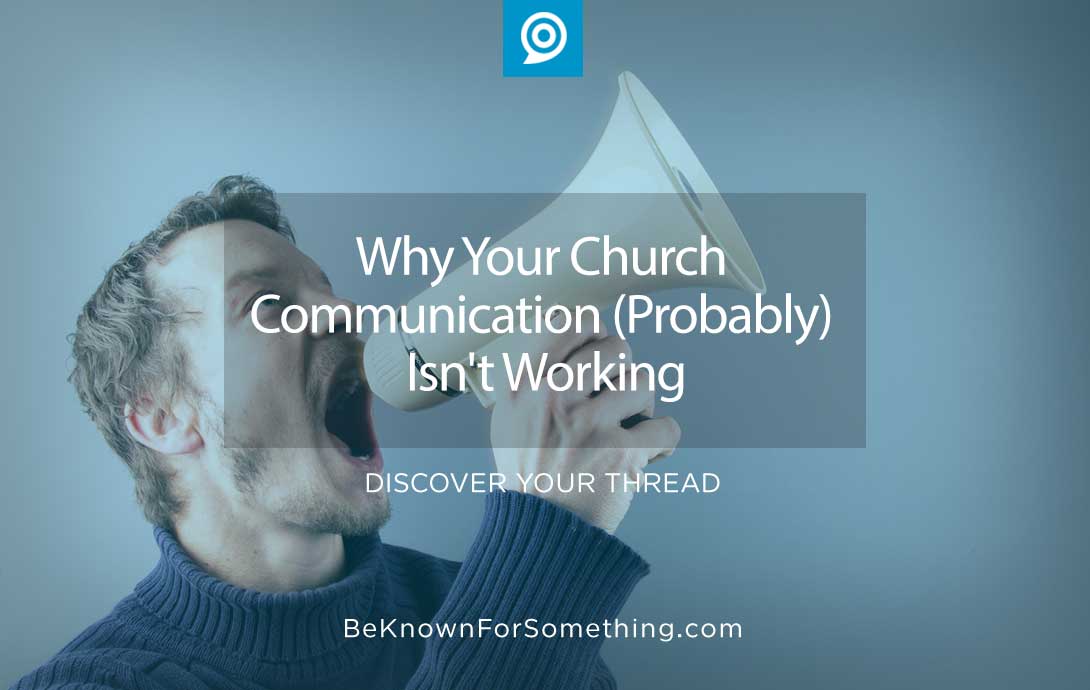Why Your Church Communication (Probably) Isn’t Working

So, your church communication isn’t working like you think it should. Perhaps your congregation attendance is shrinking or many of them don’t know about the important ministry events. Sure, it could be communication staff issues, ministry problems, bad design, a lackluster reputation, or many other issues that could be blamed.
But ultimately what decides if communication fundamentally works? It’s these 3 foundational issues. If they’re broken? Your communication is far from effective.
- You’re not connecting with an audience. If you try to reach a large audience (or “everyone”) you’ll reach very few because it’s difficult to break through into their world. If you target a smaller audience of like-minded people, you’ll be more able to get their attention. Right now, if you’re trying to communicate to a smaller audience, and they’re not engaging, the message is probably wrong. It probably isn’t something they desire or need. Relevancy is often rewording your communication so they hear information about themselves and their needs (even though it’s what you offer them).
- You’re not focusing on your community. This is different than the first point (note I say “community” and not “audience”). Your church has two audiences: internal (congregation) and external (community). Many churches are so internally focused on their congregation that they lose sight of the community around them. In the secular world, if a company only focuses on their current clientele, and not their potential sales pipeline, they will begin to fail. If you’re not practicing the Great Commission (while you’re going, making disciples), then your congregation will usually start to decline. You can’t just be internally focused with your communication strategy! A critical part of your strategy is outreach (to the same “type” of person your congregation contains). A demographic analysis of your reach area is the foundational step for communicating a message to your community (that will be received).
- Your content is about YOU and not THEM. Communication content must be seen by an audience as a solution if you want to engage with them. Or at the very least, it needs to be “perceived” as relevant to them. Churches must stop presenting material about themselves (that is often overlooked and ignored) and start producing materials about their audience’s needs, concerns, and/or goals. By doing so, the audience will see themselves in it and perceive the communication as a path to their goals or a solution to their needs. This is the sweet spot of communication we must all accomplish!
Having communication issues? Work on fixing these three fixes and your church brand will connect so your audience(s) will see how God can use your ministries in their lives!
Want 25 Game-Changing Resolutions?
Related Posts

True thankfulness: communicating gratitude that connects
We’re just a couple weeks away from Thanksgiving. Though you might not know it by the jingling commercials already flooding

AI Prompts Every Church Communicator Should Be Using
Artificial Intelligence (AI) isn’t replacing church communicators, it’s simply helping the good ones work smarter. Tools like ChatGPT (and similar)

Church Growth Strategy: Clarity That Connects
Most churches pray for growth but overlook one of their most effective tools: a clear church growth strategy built on

